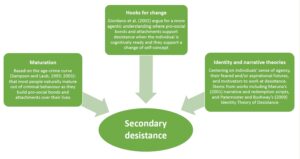Referral orders work but…
Referral orders are the most common community sentence for young people. They are more effective than other youth sentences in reducing reoffending, but they are not being delivered as government intended.
That’s the conclusion of the latest thematic inspection report by HMI Probation, published on 5 July 2016.
What is a referral order?
Introduced in 2002, the referral order has become the most frequently used court disposal for young offenders. In the year to March 2015 12,039 referral orders were given to young people in England and Wales, 10,653 youth rehabilitation orders, 2,387 custodial sentences and 229 other sentences such as reparation orders. Referral orders accounted for almost 48% of new court disposals received by YOTs.
Where a young person pleads guilty to one or more offences and has not previously been convicted of an offence, the referral order is the mandatory sentence in most cases. The primary aim of the referral order can be summarised as: to prevent young people reoffending and provide a restorative justice approach to achieve this, that involves victims, within a community context.
The local community is involved by means of volunteer youth offender panel members. Their role is to hold the young person to account for their actions (but without holding a retrial), then negotiate a contract with them. The contract is an agreement about what will be done to reduce the offending behaviour. It must include activities intended to make reparation to the community for the harm that has been caused, including to the victim wherever appropriate.
Panels are expected to operate according to three key principles of restorative justice – responsibility, reparation and reintegration.
Findings
The inspection found that overall not enough attention was given locally and nationally to ensuring that referral orders achieved their objectives.
Inspectors found that panels sometimes felt constrained by the pre-determined views of youth offending team (YOT) case managers and didn’t feel that they had enough control over decision-making. The available guidance was not as helpful as it could be, as it was too detailed in parts and in some ways contradictory. Young people responded well to the involvement of volunteers, and generally volunteers were eager to make a difference, but relationships between volunteers and YOT workers were more variable, and engagement between youth offender panels and young people to understand the harm that had been caused and to agree how it would be put right varied considerably.
Referral orders provide the chance to focus on a young person’s future and the steps that might help him/her turn away from crime. However, actions agreed with the young person and panel tended to focus on the immediate causes of the particular offence, rather than trying to understand what could help the young person stay out of trouble in the future, such as education.
YOTs had a strong commitment to the development and use of restorative justice although there was sometimes confusion about what that meant. We found that not enough victims became involved in restorative justice or benefitted in other ways from referral order work. Although there were good examples of direct reparation, and reparation to the community, in general not enough attention was given to it. Magistrates and judges had confidence in YOTs but some were not clear about the detail of referral orders.
Greater attention needs to be given to making referral orders work well, with a young person engaged constructively and given a say in their contract. Recommendations include improving the national guidance for the operation of referral orders and making clear the respective roles and responsibilities and those who support them, ie youth offending teams and panels.
Analysis
I have to confess to having little knowledge about referral orders prior to reading this report. But it appears that I am not alone, the Inspectorate found that, despite referral orders being the most common court order for young offenders, little attention has been paid to them in the nearly 15 years since they were introduced.
This is the first inspection to examine them and, bizarrely given they are a relatively new order, there does not appear to have been any dedicated work designed to assess their impact. Even the statistics which demonstrated that referral orders are the most effective court disposal in terms of reducing reoffending are no longer collected.
It seems that this lack of central ownership of referral orders may be responsible for the lack of clarity in understanding their purpose and the variation in practice which the inspectors found.
Conclusion
Dame Glenys Stacey, the Chief Inspector concluded:
Referral orders are better than other sentences at turning young people away from crime, but they could be better still. Youth offending teams need to rethink how they work with volunteers on panels that meet the young people and agree their plan of action. Some young people value their relationship with volunteers highly, but volunteers often felt boxed-in by youth offending teams and weren’t clear on roles and responsibilities.









